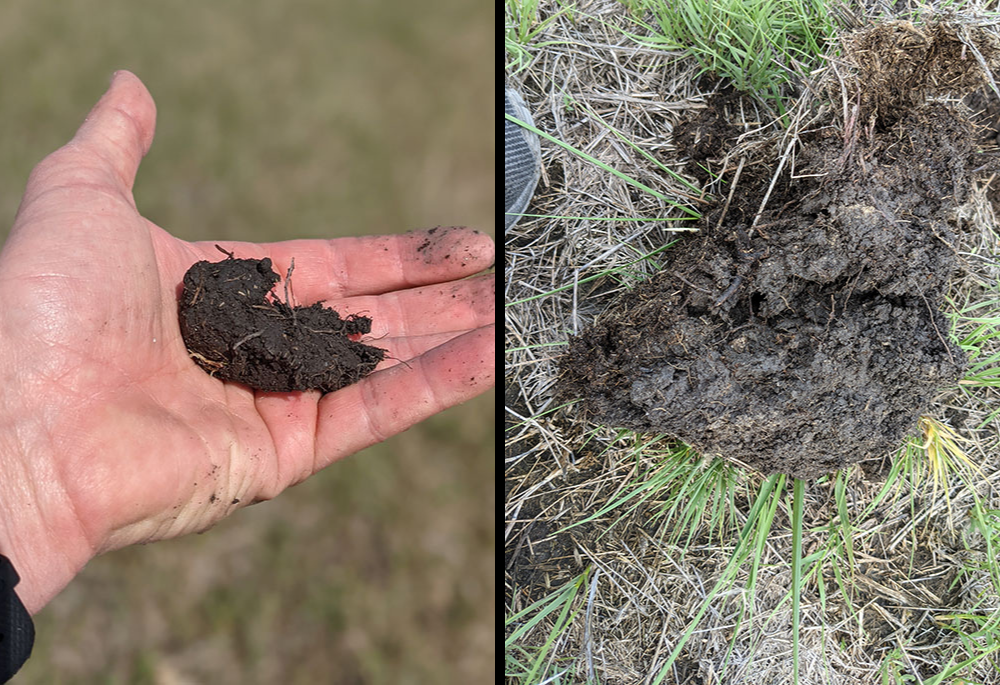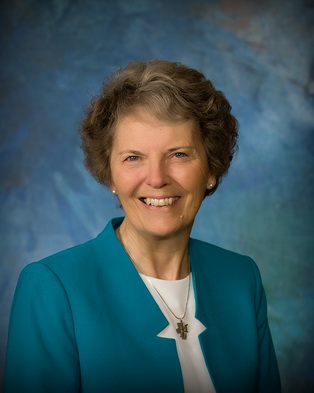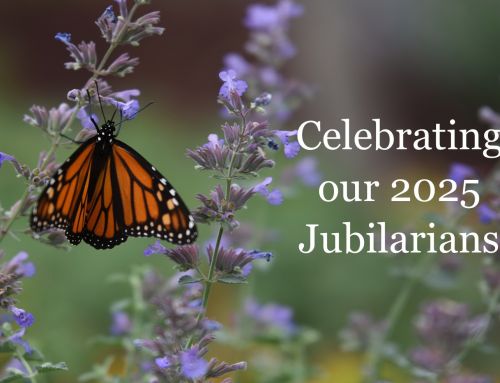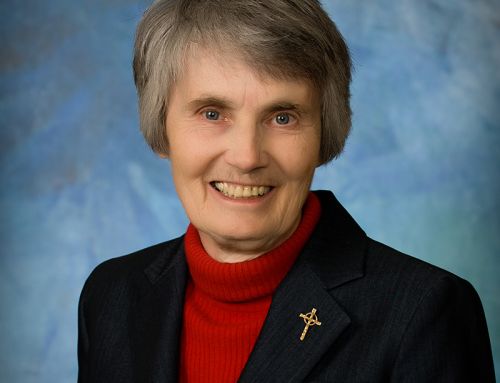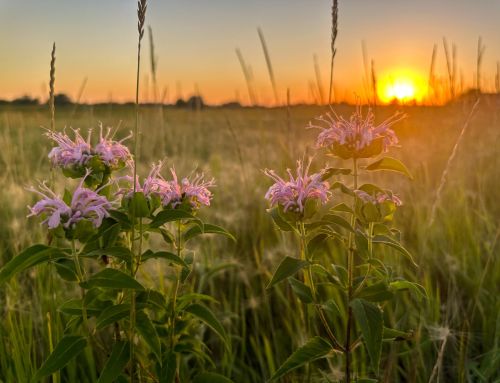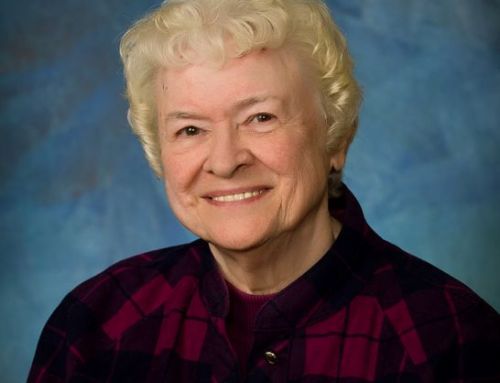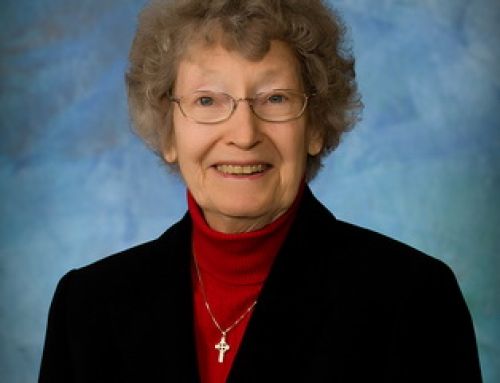At left, this soil on land owned by the Presentation Sisters of the Blessed Virgin Mary in South Dakota shows that it is compact clay, not able to retain water. The congregation has started to adopt regenerative soil methods to improve the quality of the soil and crops that are produced. At right, this soil is able to retain water and is healthier after regenerative farming efforts to restore it. (Presentation Sisters of the Blessed Virgin Mary/Jamie Risse)
Nearly every day in my work, I hear from sisters in Asia and Africa about the shortage of food and water, along with the consequences of anemia and malnutrition. Stories about people starving, children suffering from serious malnutrition, pregnant women unable to carry babies to term because of anemia, increase of disease and contaminated water from chemical fertilizers are described with heartbreaking frequency. We read also, almost daily, about refugees fleeing their homelands because of conflict but also because of hunger. They can no longer grow the food needed to stay alive. Climates are changing and soil is degraded. Rains that used to come no longer appear, resulting in droughts, or come too heavily, creating floods.
What is required is paying attention, changing our attitudes toward the Earth. Across the world, in ignorance, we have not cared for our land as it needed to be cared for. We have used synthetic fertilizers and insecticides, thinking they were the answer to world hunger, but instead they have destroyed the soil and been the root cause of diseases as well. Indigenous peoples, who once knew how to stay in relationship with the land and use it well, were lured to give up what they knew and be co-opted into farming methods that promised quick and wonderful yields.
First, the Industrial Revolution brought us tractors and machinery that automated our methods. The green revolution sparked hope and excitement for a time, but then, things changed. Yields decreased in size and profits ended. Small farmers had to try to find more land to produce what their own land no longer could. The answer was in front of us, but we could not or would not see it. We had degraded our own land.
Soil had become dirt, dried out and suffocated by chemicals and insecticides. It was on life support and needed to once again be brought back to life — to once again become soil. This was a new concept for me. I had no idea of soil’s inherent value. It was something invisible until I watched the documentary “Kiss the Ground” and discovered all the life forms that live in soil that help provide us with nutritious food. I began reading more about agriculture and learned it seems that about one-third of food production worldwide is carried on by small farms. Contrary to what I thought, most food worldwide, about 80%, is grown on family farms. I learned also that it is not just climate change alone that is causing global hunger, but also the degradation of soil and all that life it holds within itself. Climate and soil need to work together.
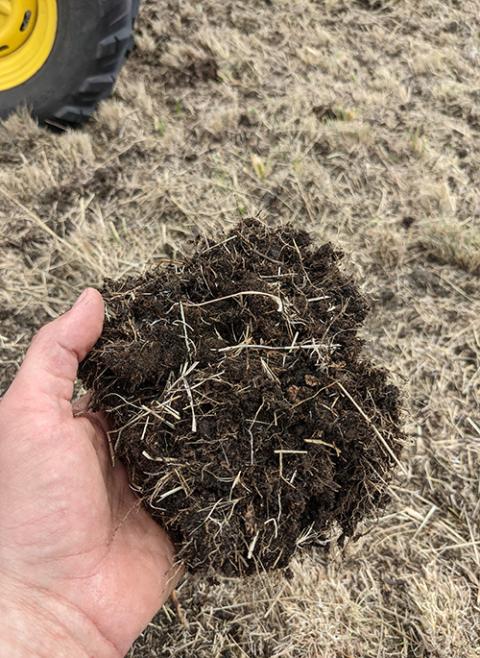
One aspect of regenerative farming is to use crop rotation and diversity seeding rather than monoculture, which depletes soil, shown here on land in South Dakota owned by the Presentation Sisters of the Blessed Virgin Mary. The congregation is adopting regenerative farming approaches to restore the soil. (Presentation Sisters of the Blessed Virgin Mary/Jamie Risse)
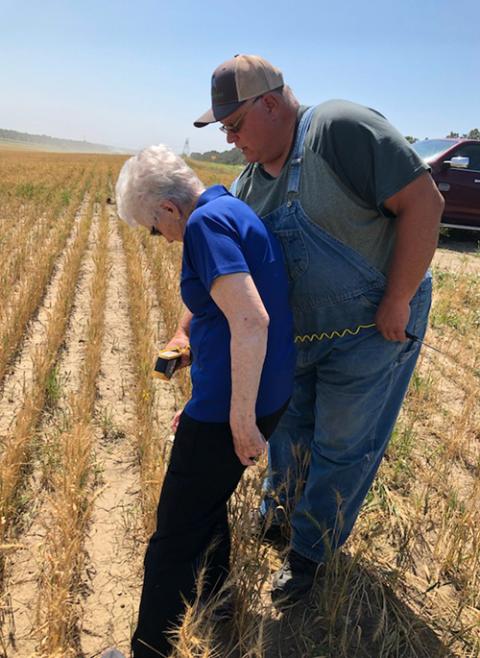
Sr. Janice Klein, former president of the Presentation Sisters of the Blessed Virgin Mary, South Dakota, is pictured with Gabe Brown, a regenerative farming expert, on his farm in North Dakota in August 2022. (Presentation Sisters of the Blessed Virgin Mary/Jamie Risse)
Pope Francis’ “Laudato Si’, on Care for Our Common Home” encourages us all to return to relationship with the Earth. So when we South Dakota Presentation Sisters moved out of our motherhouse in Aberdeen about three years ago and into new residences in Aberdeen and Sioux Falls, we began wondering what to do with the future of our 75 acres of land. We wanted to take Laudato Si’ to heart and restore the land to its original state as much as possible. We decided to create an office of Laudato Si’ and hired two people to study the situation and propose how this restoration might happen.
Since being hired, Jamie Risse and Jared Hohn have been taking us sisters, cojourners and employees on a journey of discovery, introducing us to original prairie plants and grasses and to the concept of regenerative agriculture. They introduced us to the good news that we can do something about what seems a dire situation of being unable to produce the needed nutritious food for our global population. Regenerative agriculture can help bring our soil back to life. We can regain a relationship with all the microbes that live in that soil. We can reeducate ourselves on how to build relationships between earth, animals and humans.
You may recall the children’s book, The Little Prince. As the little prince travels about the universe in loneliness, he finds a potential friendship in a fox. The fox tells the prince, and reminds us all, that building relationships takes time, patience, attentiveness, and of course, real commitment. Because regenerative agriculture is a relational endeavor, it is not a quick fix to our hunger and health issues. Farmers willing to take the risk to change their way of farming will need to learn about their particular soil and contexts and then, experiment. As they do this they will no doubt need to continue using chemical fertilizers and insecticides but with an understanding about which ones do the least damage to the microbes, the whole biology of their soil. They will need to experiment using chemical fertilizers on some of their land and try out new ways to regenerate the soil on other parts. The goal will be to find the best way to again produce nutritious foods and keep the soil healthy as well.
Our congregation’s education on regenerative farming began last January when Jaime and Jared organized an international webinar presented by Gabe Brown, a farmer from North Dakota who began efforts at regenerative agriculture in 1998. Although, without a science education he began to study the biology of the soil. He taught us about the aliveness of the soil — all the tiny animals and microbes that work together with seeds and moisture to produce nutritious food.
He also told us about the advantage of having animals participate in this process. They can provide natural fertilizers of manure, but can, unfortunately, also compound the soil, so enough land is needed for animals to be moved almost daily to a variety of forage areas. We learned about crop rotation and diversity seeding rather than monoculture farming and about “no-till” planting, all techniques to bring the soil back to life. He experimented with a variety of cover crops to keep the soil moist and even told us about the value of weeds. This was a surprise as I had learned from gardening with my mother that weeds were to be got rid of. Instead weeds, when we discover their value, can provide cover to keep the soil moist and prevent runoff and erosion.
Gabe outlined six principles of regenerative agriculture that, as I did more research, I realized would apply globally:
- Context: Environments and geographies are diverse, so it is important to know what nutrients are in the soil that crops would both benefit from and add to soil health.
- Farming that uses the least amount of tillage possible is key, so that microbe population in the soil is not degraded and water can be retained. Chemicals can be used but select those that disturb nature the least — farmers need to learn how to manage this input.
- Soil needs to be “armored” by planting cover crops that keep the soil cool.
- Planting a diversity of crops keeps building biomass in the soil.
- Leaving roots of plants in the soil as long as possible is important because they pull carbon from the atmosphere.
- Animal and insect integration: There are insects that are predators and insects that are food for predators — both are needed to keep the balance. Animals are not essential but they do add great benefit to the regeneration process.
Gabe shared with us that in the beginning of his experiment with regenerative methods, profits were at times less than what he had earned using chemical fertilizers, but with perseverance, in about five years, things turned around economically and now he has better yields and earns more profit that ever before. It takes patience and belief in nature to bring about results. He emphasized that profit is to be prized over yield.
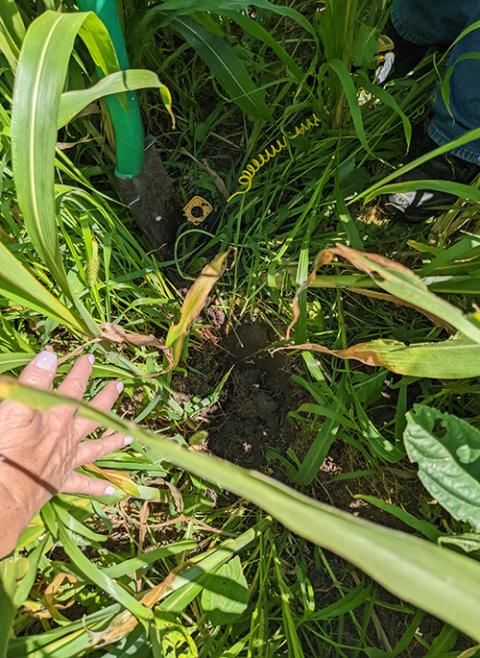
Presentation Sister Sr. Janice Klein looks at healthy soil that Gabe Brown, a regenerative farming expert and proponent, restored on his farm in North Dakota. (Presentation Sisters of the Blessed Virgin Mary/Jared Hohn)
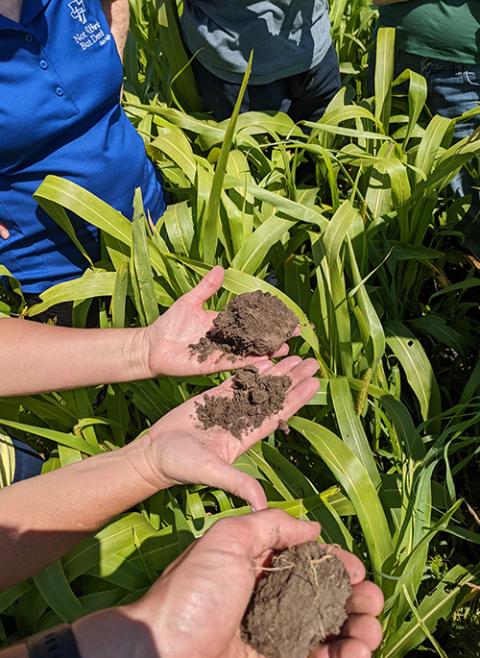
Gabe Brown, Sr. Janice Klein and others examine soil on his farm in North Dakota. Regenerative farming focuses on restoring the health of soil through natural means. (Presentation Sisters of the Blessed Virgin Mary/Jared Hohn)
Since that webinar, I have learned that grasses can provide as much carbon for the atmosphere as trees. Of course, trees are still vital to pulling carbon from the atmosphere, but in places where trees do not grow, weeds and plants can achieve similar results. Recently, I heard about particular kinds of trees that can provide much needed nutrients to the soil, keep the soil from being washed away, and provide shade for plants as they grow. Each part of the universe needs to be revived with the plants and grasses natural to its geography that can produce the foods needed for good health.
It all comes down to reestablishing relationships with nature — partnering with it rather than controlling it. Learning how to establish these relationships requires education in soil science and biology.
I am very excited that my congregation is taking up this challenge to be part of this regenerative agriculture. It is my hope that sisters worldwide will become leaders in this international movement. Many are farmers and teachers of other farmers. Many have been finding ways to meet the challenges of climate change. Many are using natural fertilizers when it is practical and are committed to planting trees. But up to now I have not heard of sisters systematically being educated in and committing themselves to regenerative agriculture. Perhaps my observations will help spark interest in this needed change.
[Sister Joyce Meyer is a member of the Sisters of the Presentation of the Blessed Virgin Mary. She is on the boards of the Conrad N. Hilton Foundation, Medicines for Humanity and the International Foundation of the Good Shepherd Sisters and has served as international liaison to women religious for Global Sisters Report since January 2014.]
